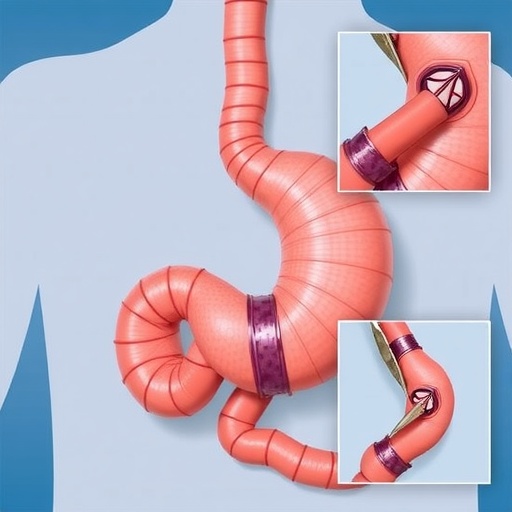In a groundbreaking effort to refine the early detection and prevention of breast cancer, researchers have conducted a comprehensive systematic review examining the intricate landscape of breast cancer risk prediction models. Published in the 2025 volume of BMC Cancer, this review meticulously aggregates and analyzes data from over a hundred studies, offering an unprecedented synthesis of how various models perform in forecasting breast cancer risk across diverse populations.
Breast cancer remains one of the most prevalent malignancies worldwide, presenting an urgent need for precise predictive tools that can aid clinicians in identifying high-risk individuals. Conventional risk models generally incorporate demographic factors such as age and family history, genetic profiles including BRCA mutations, and, increasingly, detailed imaging and biopsy data. This review explores the interplay of these variables within 107 newly developed models, scrutinizing their discriminatory power and calibration metrics.
The scale of data included in this review is vast, with cohort study samples ranging from several hundred to nearly two and a half million participants. Case-control studies likewise span an extensive size spectrum, involving thousands of participants. These studies yielded a broad range of predictive performance, measured by the area under the receiver-operating characteristic curve, or AUC, which varied dramatically from as low as 0.51—barely better than chance—to an impressive 0.96, indicating near-perfect discrimination.
A crucial aspect of these predictive models is their calibration, which assesses how well predicted risks agree with actual outcomes. Only a small subset of eight studies provided observed-to-expected event ratios, which hovered between 0.84 and 1.10, suggesting reasonable but variable accuracy in aligning predicted and observed breast cancer incidences. Notably, only 18 of the reviewed studies reported external validations, underscoring a significant gap in confirming model generalizability across different populations.
One of the review’s striking revelations is the overwhelming predominance of models developed within Caucasian populations, potentially limiting their applicability globally. This demographic bias in model development raises important questions about the equity and effectiveness of risk prediction tools for ethnically diverse groups, where genetic and environmental contributors to breast cancer risk may differ substantially.
Significantly, models that synergistically integrate demographic information with genetic or imaging/biopsy data consistently outperform those relying on demographic variables alone. The inclusion of rich biological data captures subtleties in tumor biology and individual susceptibility that demographics fail to encompass. This enhancement in model accuracy paves the way for more tailored screening programs and preventive interventions.
Curiously, the review finds that combining multiple data types—demographic, genetic, imaging—does not necessarily translate into further performance gains beyond those achieved through pairing demographic with either genetic or imaging data alone. This plateau effect implies a complexity ceiling in current modeling approaches and suggests a need for novel methodologies or data sources to push predictive boundaries.
Another layer of complexity in breast cancer risk modeling lies in balancing model complexity with clinical utility. Highly sophisticated models might achieve superior accuracy but prove unwieldy for routine practice due to data demands or interpretability issues. This review highlights the ongoing tension between intricate, data-rich models and the practical constraints confronting clinicians and patients.
External validation remains a critical frontier. Models validated only within the populations they were developed risk overfitting—where predictions fit past data well but falter in novel settings. The limited number of externally validated models signals a pressing call for widespread implementation of validation protocols to ensure models are robust and broadly applicable.
The temporal relevance of risk models also merits attention. With advancements in detection modalities and shifts in population health patterns, models may need periodic recalibration or redevelopment to maintain accuracy. The review subtly underscores that static risk models could become obsolete as breast cancer epidemiology evolves.
In discussing model performance, the authors articulate that while some recent models demonstrate remarkably high AUCs approaching 0.96, these are exceptional, often arising in specialized cohorts or with extensive molecular data. More commonly, models cluster around moderate accuracy values, revealing a gap between experimental and real-world predictive power.
The study’s comprehensive approach—encompassing cohort and case-control designs, varying sample sizes, multiple data inputs, and assessment metrics—affords a panorama of breast cancer risk modeling progress and pitfalls. It signals to researchers the domains ripe for innovation such as integrating novel biomarkers or employing machine learning techniques while cautioning about demographic biases.
Crucially, this systematic review shines a spotlight on the potential of precision medicine strategies tailored to individual risk profiles. By harnessing multifaceted data, clinicians could refine screening intervals, personalize preventive therapies, and optimize resource deployment, potentially altering the breast cancer landscape significantly.
Despite the progress detailed, the authors emphasize that breast cancer risk prediction remains an evolving science. Greater inclusivity in study populations, rigorous validation, and methodological innovation are imperative to maximize the impact of predictive models on clinical outcomes.
In summation, this comprehensive systematic review lays bare both the achievements and ongoing challenges in breast cancer risk modeling. It serves as a clarion call for the integration of diverse datasets, commitment to validating these models externally, and ensuring equitable application across all populations. Such efforts promise to transform breast cancer prevention and early detection, saving lives through data-driven precision.
Subject of Research: Breast cancer risk prediction models
Article Title: A systematic review of prediction models for risk of breast cancer
Article References: Re, F., Manaboriboon, N., Raza, I.G.A. et al. A systematic review of prediction models for risk of breast cancer. BMC Cancer 25, 1650 (2025). https://doi.org/10.1186/s12885-025-14990-4
Image Credits: Scienmag.com
DOI: https://doi.org/10.1186/s12885-025-14990-4
Tags: area under the curve in cancer studiesBRCA mutations and breast cancerbreast cancer risk prediction modelscohort and case-control studies in breast cancerdemographic factors in cancer riskdiverse populations in cancer researchearly detection of breast cancergenetic factors in breast cancerimaging and biopsy data in cancerpredictive performance metrics in oncologyrefining breast cancer prevention strategiessystematic review of cancer prediction




